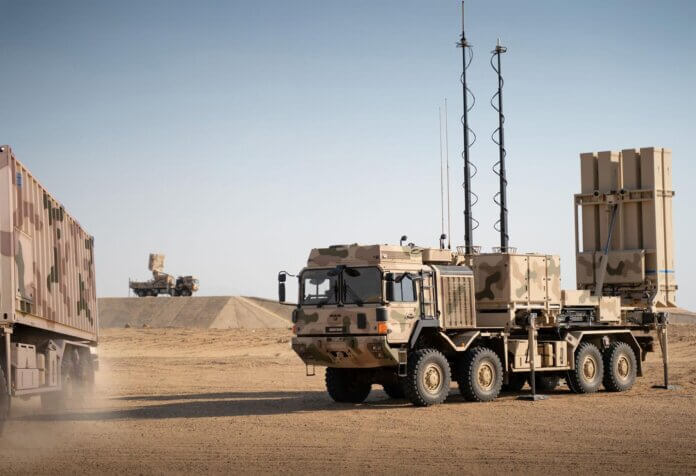Estonia, Latvia, and the Federal Republic of Germany all recently announced in my 2023 their selection of the IRIS-T ground air defense missile system. This may well have been influenced by the exceptional performance of the IRIS-T systems that have been fielded in the Ukraine.
Germany had promised four-IRIS-T systems to Ukraine in 2022 with Diehl Defense delivering the first to Ukraine in October 2022. Subsequently a second set was provided in April 2023.
These systems have performed beyond expectations with the Ukrainian Ministry of Defense indicating the system has demonstrated a 100 percent kill. A spokesperson suggested that “Even during its baptism of fire in October, it shot down all targets, mostly cruise missiles.”
The system had proven its ability to effectively and reliably down the most common and sophisticated cruise missile such as the Kalibr and the Shahed-136 kamikaze drones. Its success has highlighted its capabilities to counter the aerial threats of modern warfare and may well have contributed to the recent acquisition announcements.
The IRIS-T missile was originally developed for the air-to-air engagement role and was first fielded as such in 2005. First tested in 2014, the IRIS-T Ground Launched System adapts this missile to mobile or stationary launchers. Rheinmetall, Hensoldt, and Diehl Defense specifically teamed to cooperate in 2021 to develop the system to provide a solution for the lower/mid-tier air defense toward a German requirement which resulting in this latest version.
The missile itself has a range of up to forty kilometers (25 miles) and can address targets at up to 20,000 km (66,000 ft) altitude. The associated ground radar had a detection range of 250 km (155 miles). The missile has GPS-aided inertial navigation with radar data link command guidance during the initial approach. The missile’s exceptional close-in agility allows turns of 60 g at sixty degrees per second which is provided by its use of thrust vectoring. This, plus its improved heat seeking homing and active radar proximity fuse make it ideally capable of intercepting fast-moving and small targets, such those encountered in the Ukraine combat encounters. The truck-based versions are also highly mobile and can be rapidly relocated enhancing its survivability against air defense suppression.
Both the joint selection by Latvia and Estonia and that by Germany were conducted as competitive evaluations. In Germany’s case it is known that the IRIS-T and Arrow 3 were both contenders. An earlier version of IRIS-T ground launched is in service with Sweden and Norway.
In addition, Estonia’s Centre of Defence Investment (RKIK) considered the possibilities for the involvement of local industry partners in the program.
The contracts for IRIS-T systems will include ground launcher, tactical trucks, missiles, radar, command, and control, as well as training, associated equipment, infrastructure, and life support services.
The Baltic countries are to receive their initial systems in 2024 with full operational capability by 2025. Their number of systems has not yet been announced, however, Germany intendeds to purchase eight systems.
The German systems are projected to be initially delivered in 2024, Ukraine is expected to receive its addition two systems this year, while Egypt has thirteen systems on order.
by Stephen W. Miller













